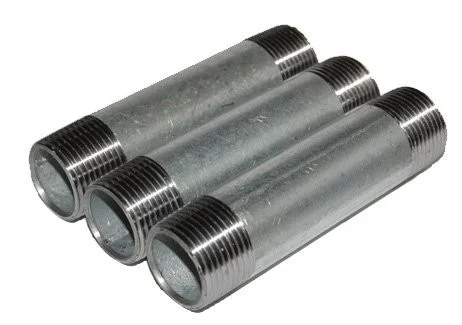Introduction
When it comes to plumbing and piping systems, the term “pipe nipple” might not be as familiar is everyone as it should be. Pipe nipples are essential components use in a variety of applications, from household plumbing to industrial processes. This article will explore what pipe nipples are, their types, uses, and why they are crucial for various systems.
What is a Pipe Nipple?
A pipe nipple is a short piece of pipe with male threads on both ends. These fittings are use to connect two other pipe components or fixtures. They come in various sizes and materials, making them versatile for different applications. The design ensures a secure and tight connection between pipes, which is vital for preventing leaks and ensuring efficient system performance.
Types of Pipe Nipples
Pipe nipples come in several types, each suited for specific needs:
Standard Pipe Nipple
These are the most common type, used in general plumbing or construction. They are available in various lengths and diameters.
Hex Pipe Nipple
Featuring a hexagonal shape in the middle, hex pipe nipples allow for easier tightening with a wrench. They are often use in places where access is limite or secure connection is essential.
Close Pipe Nipple
Close pipe nipples are short, often used when a minimal gap or need between connected pipes. They are frequently use in applications requiring a compact connection.
Long Pattern Pipe Nipple
These nipples are longer than standard ones and or use when extra length is required for proper alignment or fitting.
Materials Used for Pipe Nipples
The material of a pipe nipple determines its suitability for various environments. Common materials include:
Steel pipe Nipple
Steel pipe nipples are strong and durable, making them ideal for high-pressure applications. They are often use in industrial settings.
Stainless Steel
Stainless steel nipples resist corrosion and are use in environments exposed to moisture or chemicals. They are common in food processing and chemical industries.
Brass
Brass nipples are resistant to rust and corrosion, making them suitable for plumbing applications where the fitting will be expose to water.
Plastic
Plastic pipe nipples are lightweight and resistant to corrosion. They are used in low-pressure applications and in environments where metal fittings are unsuitable.
Applications of Pipe Nipples
Pipe nipples are used in a wide range of applications, including:
Plumbing Systems
In residential and commercial plumbing, pipe nipples connect various pipes and fixtures. They are crucial for assembling and maintaining plumbing systems.
Industrial Applications
In industrial settings, pipe nipples connect pipes carrying liquids, gases, or steam. Their durability and strength are essential for ensuring safe and efficient operations.
Automotive Industry
Pipe nipples are used in automotive applications for connecting various parts of the engine and exhaust systems. They help manage the flow of fluids and gases.
HVAC Systems
In HVAC systems, pipe nipples are used to connect different components, ensuring proper airflow and temperature regulation.
Choosing the Right Pipe Nipple
Selecting the appropriate pipe nipple involves considering several factors:
Material
Choose a material that suits the environment and the type of fluid or gas being transported. For instance, use stainless steel for corrosive environments.
Size
Ensure the nipple’s size matches the pipes you are connecting. Accurate measurements are crucial for a tight and secure fit.
Thread Type
Different systems use different thread types. Verify the thread type of your pipes to ensure compatibility.
Installation Tips
Proper installation of pipe nipples is key to ensuring a leak-free connection:
Clean Threads
Ensure the threads on both the nipple and the connecting pipes are clean and free of debris before installation.
Apply Thread Sealant
Use thread sealant tape or compound to prevent leaks. Apply it evenly around the threads before tightening.
Tighten Securely
Use the appropriate tools to tighten the nipple securely. Over-tightening can damage the threads, while under-tightening can lead to leaks.
Maintenance and Inspection
Regular inspection and maintenance of pipe nipples can prevent issues such as leaks and corrosion:
Check for Leaks
Periodically inspect connections for signs of leakage. Address any issues promptly to prevent damage.
Inspect for Corrosion
In environments prone to corrosion, regularly check nipples for signs of rust or degradation and replace them if necessary.
Common Issues and Solutions
Leaking Connections
Leaking can be caused by improper installation or damaged threads. Reapply thread sealant and ensure the nipple is properly tightened.
Corrosion
If a nipple corrodes, replace it with one made from a more suitable material for the environment.
Future Trends in Pipe Nipples
As technology advances, we might see innovations in pipe nipple materials and designs. Future developments may focus on enhancing durability, reducing maintenance needs, and improving environmental resistance.
Conclusion
Pipe nipples are fundamental components in various systems, providing crucial connections between pipes. Understanding their types, materials, and applications can help ensure you select the right nipple for your needs. Proper installation and maintenance are key to a reliable and efficient piping system.
See More Article: click here

